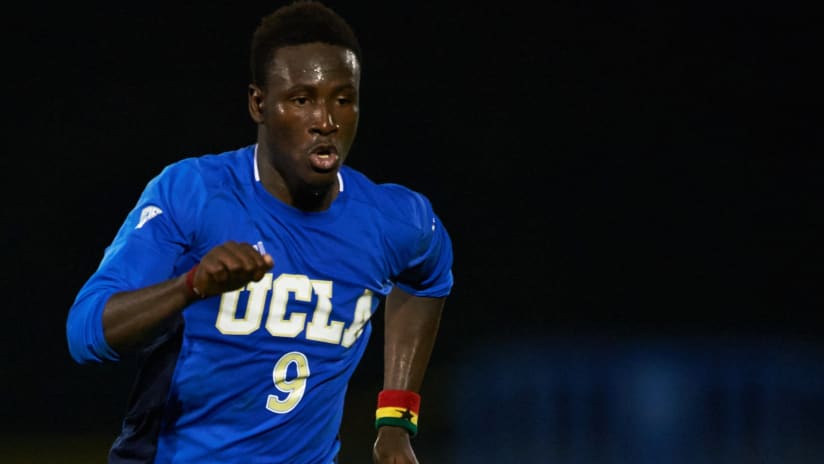The college game’s relative lack of punch on the national stage tends to pull a veil of opacity around even its best players. When it comes to MLS SuperDraft time, the league’s scouting departments are pulling overtime to get the best players’ scouting reports covered from head to toe.
Today, we take a look at exactly who those best players are.
The MLS SuperDraft is a mashup of Generation adidas contracts for talented non-seniors and deals for qualified seniors. Generation adidas players tend to monopolize the top portions of the draft, but not always. It just so happens that this year’s Generation adidas class continued the recent trend of a small but potent collection of players. When paired with the roster benefits -- Generation adidas players don’t count against the senior roster -- they tend to go quick once the draft counter starts.
So let’s peel back the curtain on the top 10 pro prospects in this month’s draft in Los Angeles on Jan. 13 and pair them up with an MLS doppelgänger. Keep in mind, the comparisons are meant to indicate play style connections, not necessarily equality in talent level. That will come later, if it comes at all. If you'd like to see which of these prospects might go where, be sure to check out the first edition of Armchair Analyst Matt Doyle's Mock Draft.
10. Reagan Dunk, Denver
MLS equivalent: Keegan Rosenberry
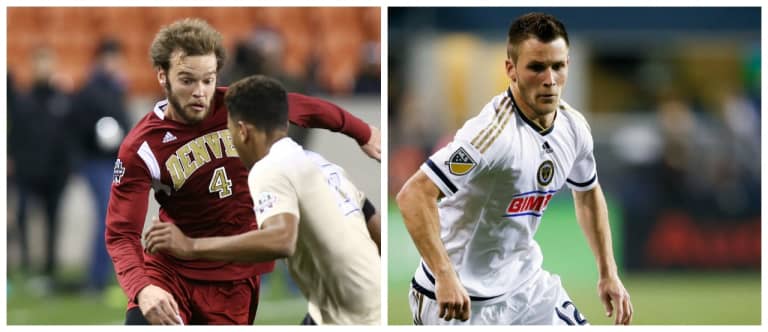
Denver made history this year by becoming the first Division I men’s team in 40 years to go back-to-back regular seasons without losing a game behind the best defense in the nation. That helped raise Reagan Dunk’s profile to national levels, and now he’s probably the best fullback prospect in the draft pool. Dunk is neither an out-and-out wingback nor a stay-at-home defensive fullback. He’s a classic tweener with both recovery speed and an eye for possession, which should serve him well as teams mull his prospects at a continual position of need league-wide. As a right back with four college years in his rearview, Dunk certainly looks like a quick transition player capable of leaping into camp feet first.
9. Brian Wright, Vermont
MLS equivalent: Chris Wondolowski
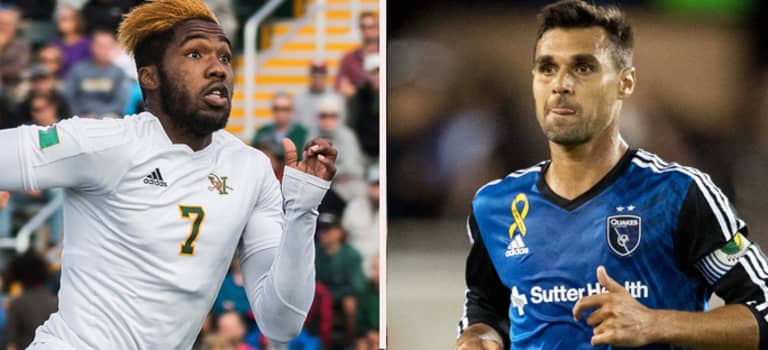
The Catamounts were lethal up top this year thanks in large part to the nation’s 2016 points king Brian Wright. The all-around talent is a skilled poacher, as exemplified by his 14 goals last season (good for seventh in the nation). But he also contributed 12 assists, which tied him for the national lead. Wright is a classic dropping forward, ladling out possession in deeper spaces and poaching striker’s goals that perhaps lack outright aesthetics. Like Wondolowski, Wright tends to flit in and out of the box on build-ups before stampeding into the six for goal chances off rebounds and squared balls. Players like Wright tend to catch on quick, and his track record doesn’t lie.
8. Julian Gressel, Providence
MLS equivalent: Michael Bradley
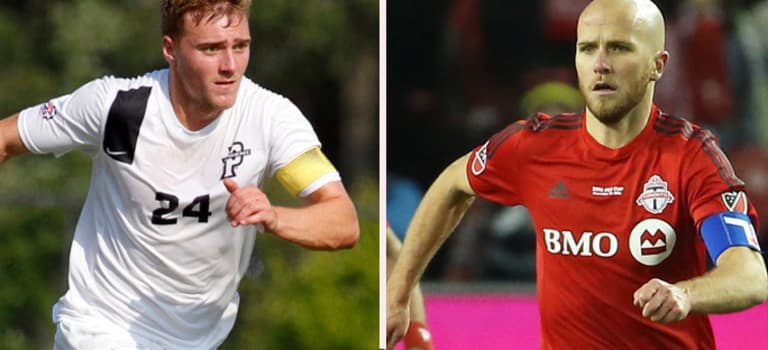
It isn’t so often that a midfielder cracks the top five nationally in goals, but then Julian Gressel isn’t your typical midfielder. As it happens, midfielders tend to march backward a step in the transition to the pro game: No. 10s fall back into box-to-box roles while those in-between midfielders (like Seattle’s Cristian Roldan in 2015, for instance) often become roving shields for the back line. So it is with Gressel, whose largesse in possession and technical ability will almost certainly make him more of a withdrawn No. 8 and ball-tracker in defensive space at the next level. Gressel scored 15 goals last year, so he knows how to finish, but it’s his unerring consistency in prodding possession and hard-headedness on ball that will likely woo an enterprising MLS front office into making him the connective tissue between defender and creator.
7. Brandon Aubrey, Notre Dame
MLS equivalent: Matt Hedges
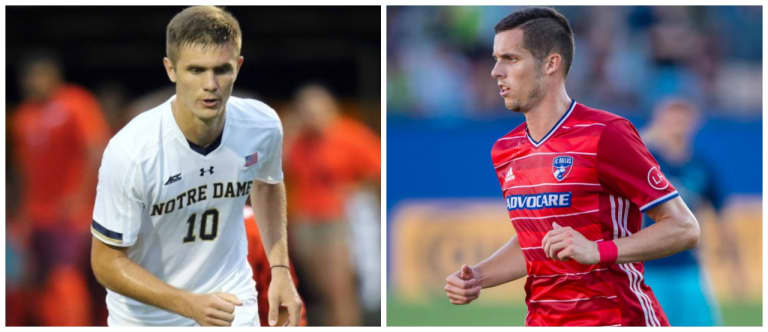
If you’re looking for the most MLS-ready senior defender in the draft pool, you’ve found him. So perhaps it should come as no surprise that Brandon Aubrey was extended an MLS contract before the draft, considering he could be competing for minutes right away depending on where he lands. At 6-foot-3, Aubrey is a tremendous aerial presence at center back and is good enough in space to ward off tricky dribblers from the area. Notre Dame’s Bobby Clark is a defensive wizard, and he coaches up pro defensive prospects like few managers in college history. Like Hedges, Aubrey won’t be the speediest center back in the league, but he won’t be asked to be either. His plus instincts in the box and quick-fire lateral quickness will almost certainly make some club happy recipients.
6. Jacori Hayes, Wake Forest
MLS equivalent: Joao Plata
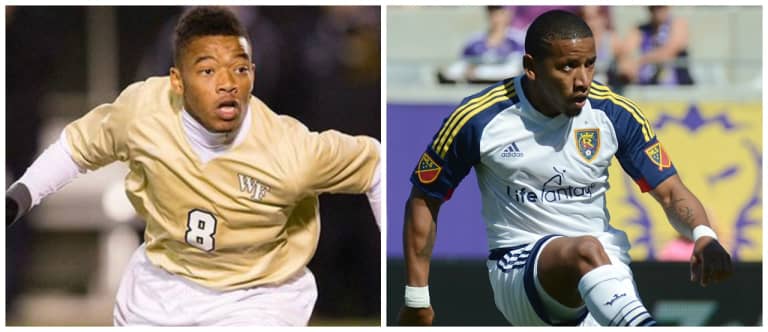
Whatever college soccer’s reputation, the game does produce the odd diminutive technical creator. They tend to grow in the fertile soils planted by the coaching staffs at programs like UCLA, Akron and Wake Forest, and senior Jacori Hayes looks to be next in line. Hayes was often asked to be part of Wake Forest’s central midfield as a sort of creative hybrid, bouncing between roles as a possession backboard, stampeding attacking midfielder and pseudo-winger. His size (Hayes stands just 5-foot-7) might necessitate a move outside as a collapsing winger, which would suit his game just fine. After playing in a pro-minded possession system at Wake Forest, which might as well be the Alabama of college soccer these days, Hayes shouldn’t last long come draft day.
5. Jackson Yueill, UCLA
MLS equivalent: Sacha Kljestan
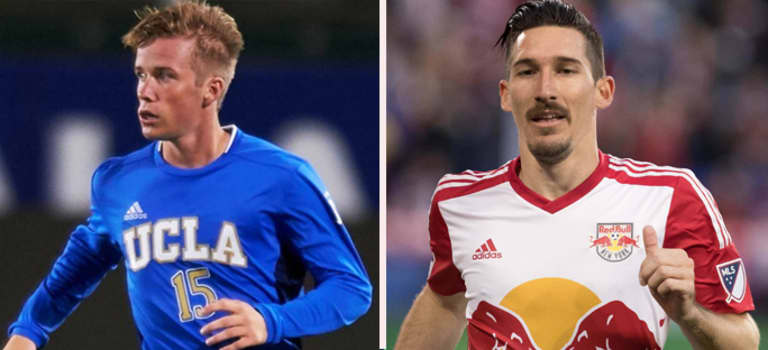
The last of our Generation adidas players in the top 10, Jackson Yueill is a rare bird when it comes to draft prospects. He spent most of his two years at UCLA playing as the team’s creative impetus, calmly stoking builds and playing killer balls into the box for his runners. There’s perhaps no player in the draft (and no player in recent draft history) with as demonstrated an eye for where a player is going to be -- and not necessarily where he is -- as Yueill. The trouble mostly swirls around best position questions, and like Sacha Kljestan, that might take some time to resolve. Is he a No. 10? He’s certainly played there for much of his career. Is he an inside winger in the vein of a Jack Harrison? He’s played there too. Or, perhaps, is he more of a midfield general, providing cover and possession for higher setup men? The team that answers these questions has a franchise player on its hands.
4. Shamit Shome, FC Edmonton
MLS equivalent: Kelyn Rowe
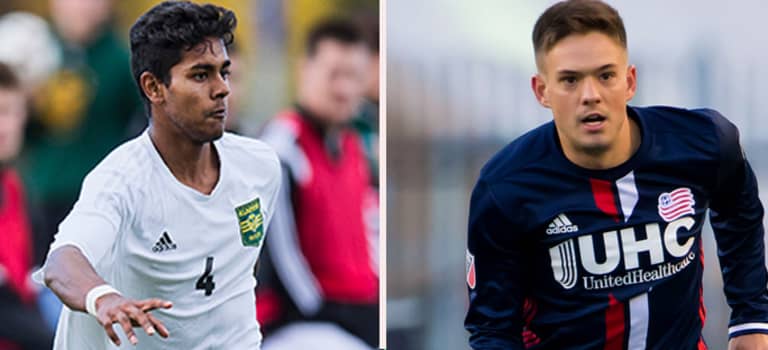
The 2017 MLS SuperDraft will make history by being the first to include Canadian players on Generation adidas contracts. And Shamit Shome will forever go down as the first of those to sign. Shome is an anomaly in this discussion because he’s the only player on this list to have significant professional experience. He tallied more than 1,000 minutes in the NASL for his native FC Edmonton in 2016, with his pass completion ending up at 83.5 percent during the season. Shome, 19, is a quick, patient central midfielder who’d immediately fit in with a club -- like, say, Columbus -- that prefers to pile on passes and work it along the ground at speed. He’s probably not the Ignacio Piatti type to unlock back lines on his own, but his versatility and possession approach are major pluses for teams on the lookout for immediate contributors.
3. Miles Robinson, Syracuse
MLS equivalent: Jelle Van Damme
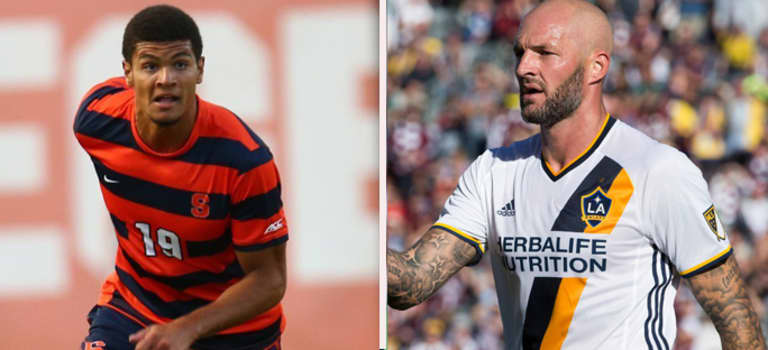
Miles Robinson was, without much doubt, the best defender in college soccer in 2016. As a sophomore. He burst onto the national scene with a rousing performance in the 2015 College Cup as a freshman, and his follow-up season in 2016 was something to behold, like watching a young lion come into his claws. Robinson, like Van Damme, is a rangy, high risk-reward center back who likes to step into challenges and form the base of the spine during attacks. He’s probably the best possession center back to emerge in the draft since Matt Polster, who was so good on ball the Chicago Fire moved him into the midfield. Don’t expect the same for Robinson, who has the frame and technical ability to be a special center back for years. It’s no surprise he’s firmly on the US national team radar.
2. Jeremy Ebobisse, Duke
MLS equivalent: Bradley Wright-Phillips
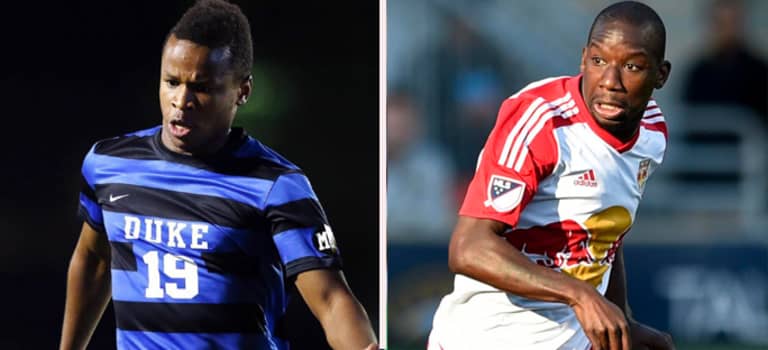
There’s a clear delineation between the top two and everyone else. Minnesota United has a choice to make with its top overall pick, and there’s little question that Jeremy Ebobisse is the safest pick on the board. He was a wrecking ball of a forward in two years with Duke, scoring nine goals and producing some real moments of magic. Ebobisse is one of those jack-of-all-trades forwards, capable of just about anything in just about any system. That has to be music to an expansion club’s ears. Of course in this he lacks specialization, but that certainly hasn’t hurt Wright-Phillips, who’s banked on his all-around game to become one of the most lethal scorers in MLS history. Ebobisse has that in him if he can find a creative system that can generate looks. The good news? He’s malleable, skilled and endlessly technical. As far as picks go, it gets no safer than Ebobisse, who’s ready to go now.
1. Abu Danladi, UCLA
MLS equivalent: David Accam
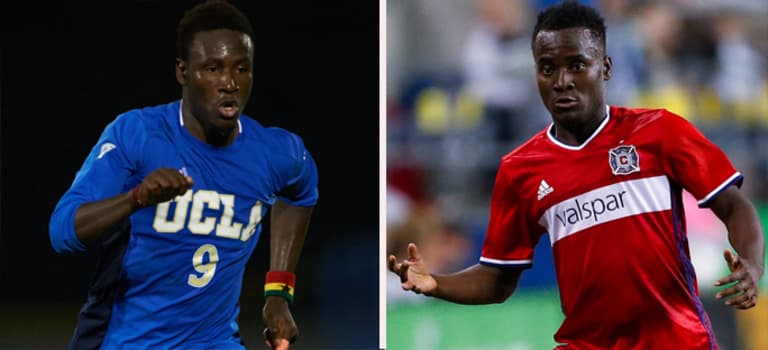
Every Generation adidas class has its bejeweled centerpiece. In 2015 it was Cyle Larin. In 2012 it was Dom Dwyer. Whether or not Abu Danladi eventually turns into one of those types of players, he certainly has all the tools to become one of the better drafted forwards in recent memory. Ebobisse is the safer pick between the two, but Danladi has more boom (and, admittedly, bust) potential. Throughout his three years at UCLA, the lightning-clap Ghanaian alternated between moonlighting as the hands-down best player in college soccer and extended periods on the trainer’s table. Danladi’s health inconsistency is a major flag for MLS clubs, but as far as actual playing potential, nobody in this draft pool has a higher ceiling than Danladi. There’s not a single defender in MLS who can match his top speed, and do yourself a favor and roll back some of his best finishes with the Bruins. In top form, Danladi can start just about anywhere in the league tomorrow. If he can stay healthy, of course.

